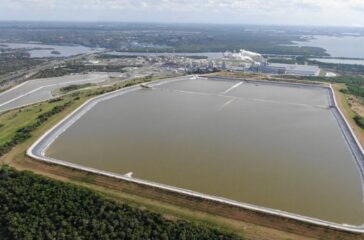Citing “toxic mountains,” conservation groups file notice of intent to sue EPA
By Johnathan Hettinger
US regulators are failing to address toxic “open-air dumps” that in some cases tower many hundreds of feet tall and hundreds of acres wide, according to a group of conservation and public health advocates who have filed a notice of intent to sue the government to force protective action.
The advocacy groups represent people in multiple states who live near the manmade dumps that store massive amounts of a radioactive substance called phosphogypsum, which is generated in the process of creating phosphoric acid for fertilizer. Phosphogypsum and its leachate can contain several hazardous substances, including arsenic, lead, cadmium, and chromium. These substances are considered carcinogenic and known to induce damage to multiple organs, even at lower levels of exposure, according to the National Institutes of Health.
Communities in Florida, Texas, Louisiana and other states are at risk from these dumps, according to the groups. There are four “Superfund” abandoned hazardous waste sites in Idaho, Illinois and Mississippi, where phosphate plants once operated.
The fertilizer industry creates 46 million tons of phosphogypsum each year, more than the amount of regulated hazardous waste produced in all other industries combined, according to the notice of intent to sue. In Florida, alone, there are more than one billion tons of phosphogypsum stored across 25 stacks, the groups say.
“The waste is not just toxic, it’s not just carcinogenic. It’s radioactive,” said Jaclyn Lopez, director of the Jacobs Public Interest Law Clinic for Democracy and the Environment at Stetson University, who is providing legal representation to the groups. Lopez recently authored a legal review finding that these plants are largely concentrated in low-wealth and minority communities across the United States.
“This has the potential to impact truly millions of people,” Lopez said.
 EWG
EWG